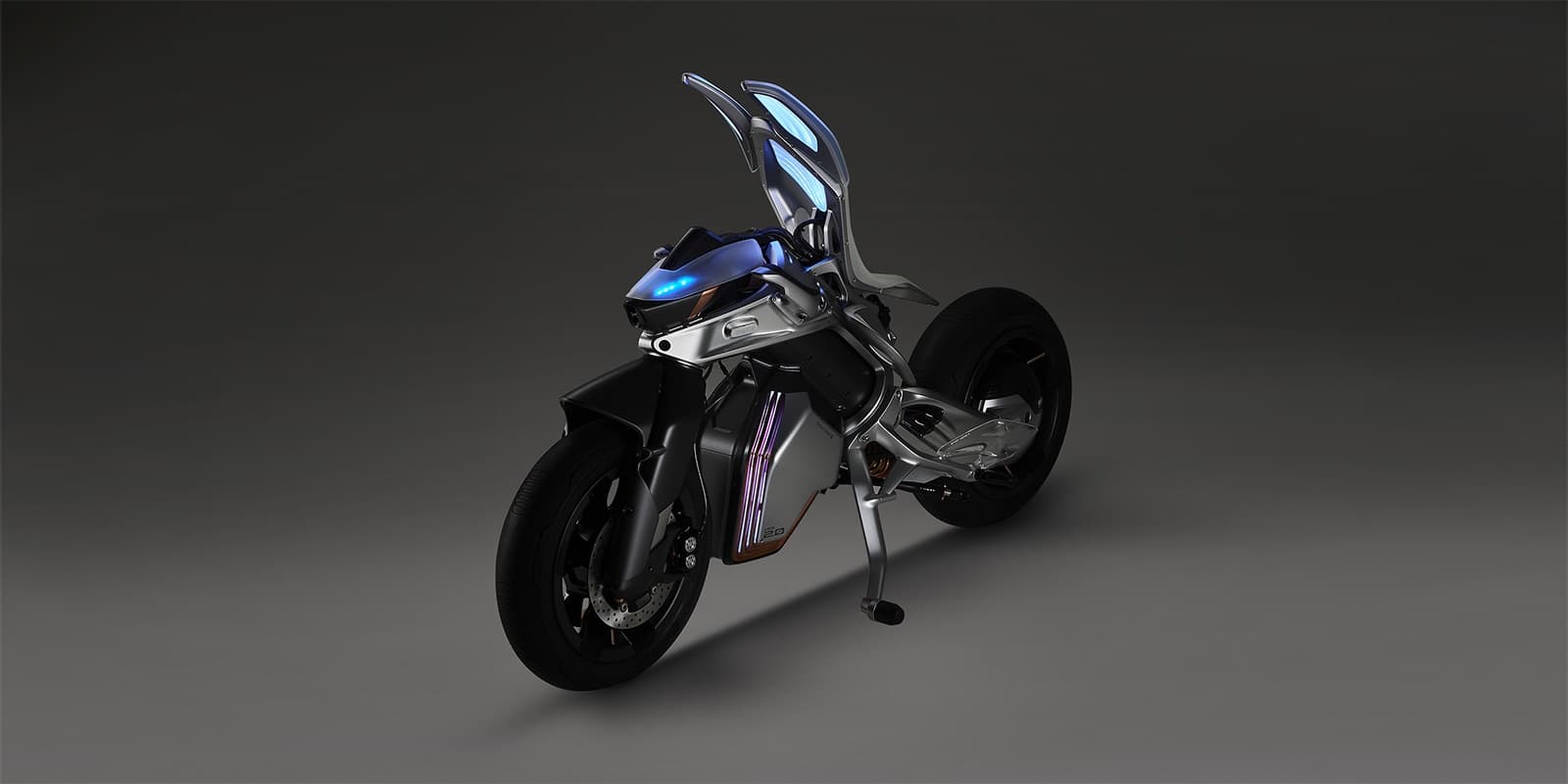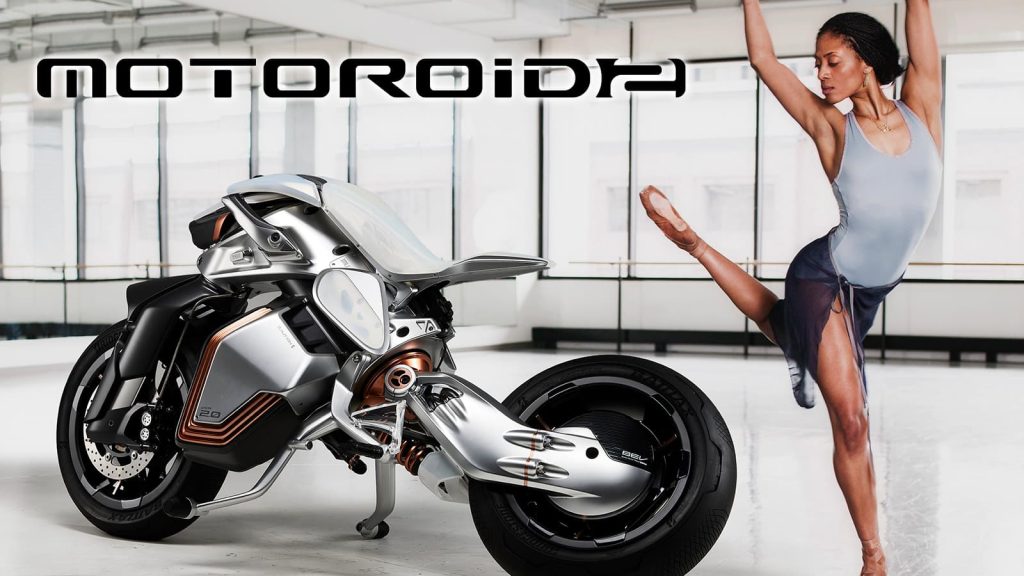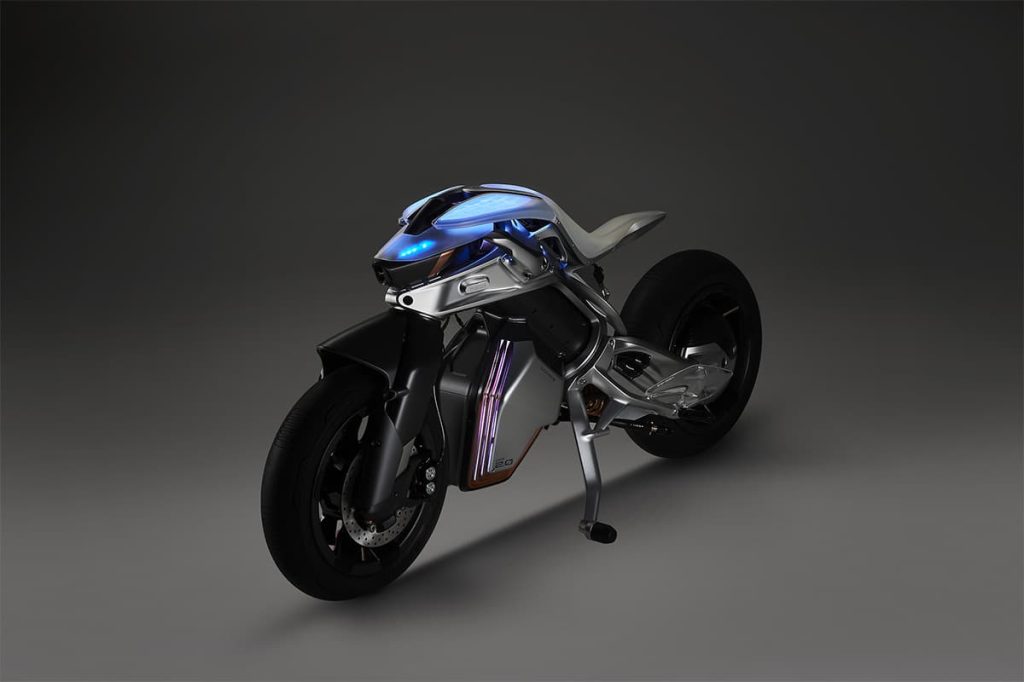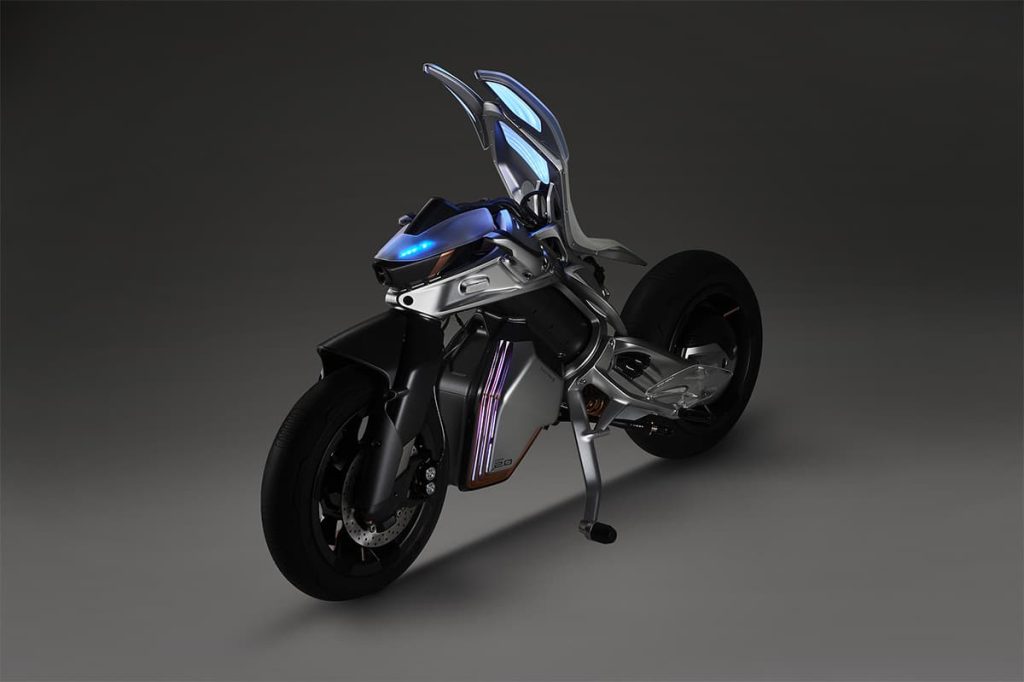
When Yamaha first revealed the Motoroid electric motorcycle concept roughly six years ago, it looked like a contraption out of a science-fiction movie. Now that the company has unveiled a new, refined Yamaha Motoroid 2, the wild self-balancing electric motorcycle looks like it could be one small, weird step closer to reality.
The Yamaha Motoroid 2 takes significant liberties with its design, eschewing much of the mechanics of traditional motorcycles.
The rear swingarm provides suspension like most typical motorbikes, but also incorporates a pivot that allows the rear half of the bike to lean independently on the front.
The rear houses a hub motor that gets powered by a rather small-looking underslung battery pack.
The front fork, which New Atlas describes as operating “mercifully normal” compared to the rest of the bike, provides steering in a non-traditional method. That’s because there are no handlebars like you’d find on a conventional motorcycle. Instead, the handlebars have been replaced by rigid hand grips – essentially just handles to hang on to.
In fact, it’s not even clear exactly how the front fork rotates or how the pivoting rear swingarm could potentially aid in steering.

What is clear is that the Yamaha Motoroid 2 is designed to be self balancing and even potentially riderless, meaning it can drive and balance itself regardless of whether or not it has a human along for the ride.
When operating without a rider aboard, the bike can use facial recognition and gesture control to follow a person around.
A large centerstand is designed to drop down when the Motoroid 2 slows for parking. The stand can be raised autonomously when the bike decides to start rolling again.
Blue mood-lighting accents much of the new bodywork, which also raises up over the faux tank area for an unknown reason.


While Yamaha is unlikely to actually produce an electric motorcycle like this, it is interesting that the company sees enough value in the idea to develop a second concept and even develop a working prototype, which the company says will be shown off next month at the Events Japan Mobility Show 2023.
Unlike Yamaha, which has been slow to embrace full-size electric motorcycles, fellow Japanese moto-maker Kawasaki is preparing to start deliveries of its first two commuter electric motorcycles, the Ninja e-1 and Z e-1. Both bikes are now launching in North American markets (US and Canada) as well as in the UK. In the US, the Ninja e-1 will be priced at US $7,599, while the 2024 Z e-1 starts at a slightly lower US $7,299.
The Motoroid 2 certainly won’t be hitting the streets any time soon, but Yamaha has developed and launched several lower-power electric scooters, taking a similar approach to Honda by focusing first on electric scooters.
FTC: We use income earning auto affiliate links. More.

